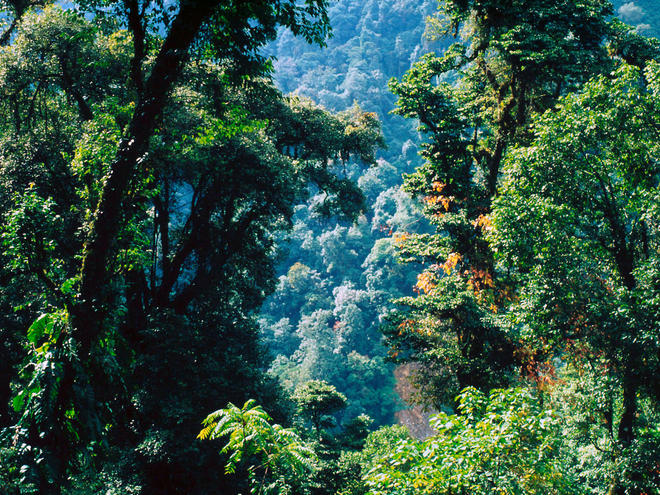Red pandas, climate change, and the fight to save forests
Published by the World Wildlife Fund


Every year the northeastern state of Sikkim hosts the Red Panda Festival. The winter event features parades, live music and draws tourists and locals alike. It’s a joyful celebration named for Sikkim’s iconic state animal.
While residents of Sikkim honor the endangered red panda, they also understand the species is under a growing threat. Climate change is impacting species across the globe and red pandas—with less than 10,000 left in the wild—are not immune.
Average temperatures in Sikkim are rising. Within its forests, the red panda occupies habitat within a very narrow temperature range. As temperatures rise, the red panda will need to move to higher elevations to adapt to the changing climate.
This is a troubling scenario, as nearly 70% of suitable red panda habitat in Sikkim is located outside of designated protected areas. How much habitat will be available to accommodate potential range shifts is unknown. Human activities are taking a toll on local forests. And unless these forests are secured, red pandas may have an uncertain future in a changing climate.
WWF is helping communities in Sikkim protect forests and ensure that, even with rising temperatures, the red panda has a secure place to call home. Specifically, WWF and its Wildlife Adaptation Innovation Fund are working to decrease human impacts on Sikkim’s forests through use of improved cookstoves, sustainable harvesting of forest products, and reducing the risk of forest fires.
In communities bordering red panda habitat, most households rely on firewood from the forest as their primary source of cooking fuel. To combat the loss of trees, project staff have now trained 23 families in the manufacture and installation of new cookstoves that require less fuel. Residents have noticed a change: the new cookstoves reduce fuelwood use by up to 35% per household, cut cooking times in half, and significantly lower indoor air pollution.
Sikkim’s forests are also home to medicinal plants harvested by communities and often overexploited and traded illegally. WWF helped develop a nine-point action plan in collaboration with the village of Sindrabong to regulate use of forest resources and harvest plants more sustainably.
The changing climate in Sikkim also means changing rainfall patterns, which can lead to an increased risk of forest fires. To prepare for this, project staff conducted a study of current fire risk and mitigation efforts. As a result, they developed new recommendations for improved fire prevention and management.
WWF is working with high-level officials from the state government’s Department of Forests, Environment and Wildlife Management to share project findings, results and recommendations. As a result, important policy decisions will further strengthen forest management and ensure a healthy and secure habitat for the red panda.
Read the full article at: http://feedproxy.google.com/~r/WWFStories/~3/wKjYRmlCXaA/red-pandas-climate-change-and-the-fight-to-save-forests


